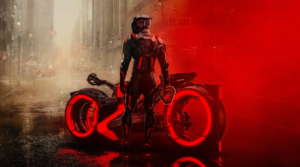Emma. Film Review

Image courtesy of Emma. Facebook page
By Jacqueline Jedrych
Many films have attempted to capture the light-hearted romance and realism of Jane Austen’s works. They are celebrated for their witticisms and iconic female central characters. One of the most recent adaptations is Emma.
Emma. made its limited theatrical debut in the United States on February 21, 2020, making $25.2 million in the box office. Directed by American photographer Autumn de Wilde and costumed by Oscar winner Alexandra Byrne, the aesthetics of the movie are visually pleasing and period-appropriate. The movie was well-received by critics, earning an 86% critic rating on Rotten Tomatoes.
Based on Jane Austen’s 1815 novel of the same name, Emma. follows Emma Woodhouse (Anya Taylor Joy) through a year in her life as she meddles in the love lives of her friends. She takes under her wing a young girl named Harriet (Mia Goth). When Harriet receives a proposal, Emma convinces her to turn it down, saying he is not good enough for her. Emma similarly intervenes in the love lives of other friends and acquaintances, such as Jane Fairfax (Amber Anderson), Frank Churchill (Callum Turner), and George Knightly (Johnny Flynn). Emma unthinkingly insults her irritatingly talkative but kind-hearted neighbor Miss Bates (Miranda Hart) while out on a picnic. The uncomfortable situation makes Emma realize her self-centeredness, and she attempts to correct the outcomes of some of her controlling actions.
While Emma. doesn’t perfectly capture the Austenian humor of the original novel, it is a very good adaptation and a great watch. The movie’s strongest points were its cinematography and witty script.
The aesthetic of the movie is light, dainty, and airy, very accurate for the period. Costume director Alexandra Byrne has spent most of her career on period costumes. The costumes are incredibly historically accurate. Several of them are copied out of real Regency dresses from museums, and none would look out of place in Austen’s era. The costumes’ fabric and color choices play into the delicate but luxurious feeling prevalent throughout the film. Director Alexandra Byrne and Production Designer Kave Quinn drew inspiration for the movie’s color palette from movies such as Marie Antoinette and The Grand Budapest Hotel, as well as original Georgian prints and Sir John Sloane’s Museum in London. Quinn mentions, specifically, the vivid red used as an accent in the film, called Pompeii Red. The whole movie is undeniably beautiful to watch. They say that to convey the idea of Emma using people as her personal playthings, the colors are whimsical and light like a dollhouse. Additionally, Byrne’s photography background shines through. Her experience in portrait photography is evident in the framing of shots, which adds a personal, yet detached touch, achieving the dollhouse feeling.
Jane Austen’s work has a distinctly witty and clever air, with quick dialogue and subtle remarks. Emma. does an admirable job of capturing this. The script is well-written and captures the idea Austen was going for, although a few lines came across a little heavy-handed. Because of the subtlety required to handle Austen’s work, a large burden of silent expression falls on the actors. They handled this with grace, telling a large portion of the story through longing gazes and subtext. Overall, Emma. was an enjoyable and easy film to watch. The exquisite aesthetics and cinematography, meticulously accurate costumes, and clever script made it an adaptation of the book that would have bemused Austen herself.







